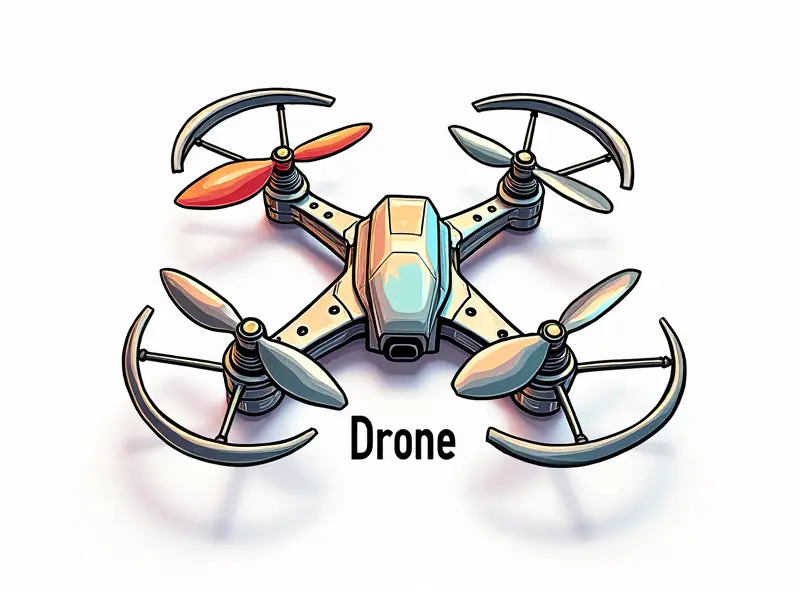What's an FPV drone setup?

Beginner's Guide To FPV Drones
Welcome to the exhilarating world of First-Person View (FPV) drones! If you're new to this technology, you might be wondering what exactly an FPV drone setup entails. In essence, it’s a system that allows you to control and see through your drone's camera in real-time, providing an immersive flying experience.
Build Your Own FPV Drone System
Building your own FPV drone can be both challenging and rewarding. It offers the freedom to customize every aspect of your setup according to your preferences and needs. Whether you're a hobbyist or a professional racer, constructing an FPV drone from scratch allows you to understand its mechanics better.
Essential Components Of An FPV Drone
An FPV drone consists of several critical components that work together seamlessly:
- Frame: The frame is the backbone of your drone, providing structural integrity and housing all other components. Common materials include carbon fiber and aluminum.
- Motors & Propellers: Motors are responsible for generating lift, while propellers convert rotational energy into thrust.
- ESC (Electronic Speed Controller): ESCs control the speed of each motor based on input from your transmitter and flight controller.
- Battery: The power source that keeps everything running. Lithium-Polymer (LiPo) batteries are commonly used for their high energy density.
- Flying Camera & Video Transmitter: These components capture the video feed and transmit it to your goggles or monitor in real-time.
- Flight Controller: The brain of the drone, responsible for stabilizing flight and executing commands from your transmitter.
How To Set Up FPV For Racing
Racing with an FPV drone requires a bit more finesse than casual flying. Here’s how to set up your system:
- Choose the Right Gear: Opt for lightweight, high-performance components designed specifically for racing.
- Tune Your Setup: Adjust settings such as PIDs (Proportional-Integral-Derivative) to optimize stability and responsiveness.
- Practice Flight Patterns: Familiarize yourself with common race tracks and practice flying in tight spaces.
DIY FPV Drone Setup Tutorial
If you're ready to dive into building your own FPV drone, follow these steps:
- Select Components: Choose the right frame, motors, ESCs, battery, camera, and transmitter.
- Assemble Frame & Motors: Mount the motors securely to ensure balanced flight.
- Install Electronics: Attach the flight controller, ESCs, and other electronic components.
- Connect Wiring: Properly wire all components according to your chosen setup.
- Test Flight: Conduct a thorough test flight to ensure everything is functioning correctly before taking it out for real-world use.
Understanding FPV Technology In Drones
FPV technology involves several key elements that make the experience possible:
- Video Transmission: High-quality video transmission is crucial for a smooth and immersive flight experience. Look for transmitters with low latency.
- Receiver & Goggles: The receiver captures the transmitted signal, which is then displayed on your goggles or monitor in real-time.
- Battery Management System (BMS): Ensures safe and efficient power distribution to all components.
Must-Have Tools for Building FPV Drones
To build an FPV drone, you’ll need the following tools:
- Screwdrivers (Phillips & Flathead): Essential for assembling and disassembling your drone.
- Multimeter: For testing electrical components before installation.
- Wires & Connectors: To connect various electronic parts of the drone.
- Soldering Iron: Necessary for soldering wires and securing connections.
Setting Up Your First FPV Drone System
Getting started with your first FPV drone system involves several steps:
- Select Components: Choose components that suit your budget and performance requirements.
- Assemble Frame & Motors: Ensure proper alignment of motors for balanced flight.
- Install Electronics: Carefully install the flight controller, ESCs, battery management system, and other electronics.
- Connect Wiring: Use appropriate wires and connectors to link all components securely.
- Test Flight: Conduct a test flight in a safe environment before venturing out into the real world.
Key Components of a Competitive FPV Setup
A competitive FPV setup includes advanced features and high-performance components:
- High-Frame Rate Camera: For smoother video transmission during races.
- Lightweight Frame: To achieve better maneuverability and speed.
- Tuned Flight Controller: Optimized for racing conditions with precise control over flight dynamics.
How to Assemble an FPV Racing Drone
Assembling a racing drone requires precision and attention to detail. Follow these steps:
- Select Components: Choose lightweight, high-performance parts designed for speed and agility.
- Mount Motors & Propellers: Ensure proper alignment and secure mounting of motors.
- Install Flight Controller: Position the flight controller in a central location within the frame.
- Connect Wiring: Use high-quality wires to connect all components securely.
- Tune Settings: Adjust PID settings and other parameters for optimal performance during races.
Quick Start Guide: FPV Drone Assembly
To get started with assembling your FPV drone, follow this quick guide:
- Select Components: Choose components that fit your budget and desired performance level.
- Assemble Frame & Motors: Mount motors securely to ensure balanced flight.
- Install Electronics: Carefully install the flight controller, ESCs, battery management system, and other electronics.
- Connect Wiring: Use appropriate wires and connectors to link all components securely.
- Test Flight: Conduct a test flight in a safe environment before venturing out into the real world.
Building your own FPV drone can be an exciting and rewarding experience. By following these guidelines, you'll be well on your way to enjoying the thrill of flying with first-person view technology.
Conclusion
FPV drones offer a unique and exhilarating flying experience that combines cutting-edge technology with the joy of flight. Whether you're building your own drone or purchasing one ready-made, understanding the key components and assembly process is essential for achieving optimal performance and safety. With the right tools and knowledge, you can enjoy hours of fun and adventure in the world of FPV drones.

